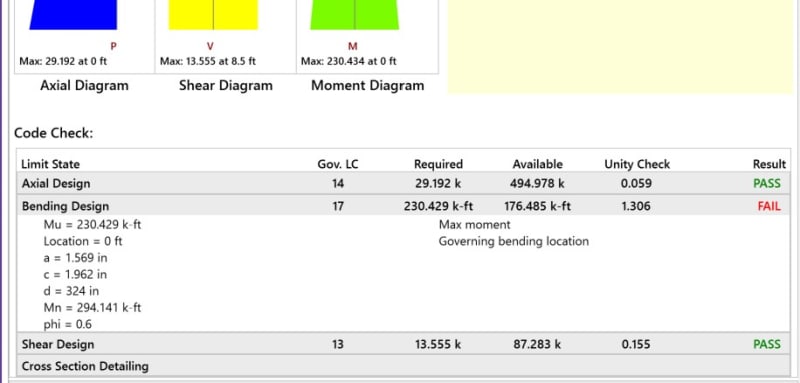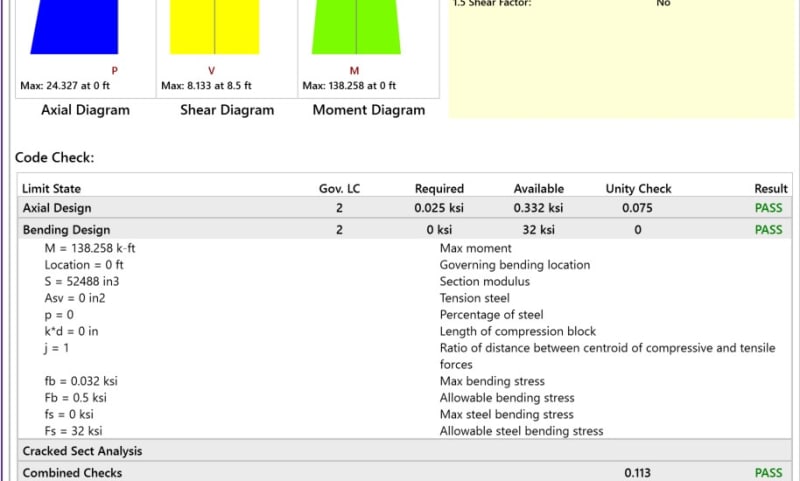EngStuff
Structural
- Jul 1, 2019
- 81
I have been looking around and couldn't find a specific example or explanation of why this is happening, My situation is I am analyzing an existing 12" non reinforced masonry wall in both strength and stress method for shear.
The wall is a 12" unreinforced masonry structure that has a height of 17 feet, and a length of 27 feet. f'm = 1,500. it is nonbearing wall with a shear load from wind of about V(ultimate)= 13554k or 0.502k/ft.
I did it on RISA 3D and noticed in LRFD it was failing, and in ASD it was good. I looked through the code check and determined that it was the in-plane bending due to shear that was causing the failure in strength design. I ended up reanalyzing only by hand in ASD and it works good.
Am I doing something wrong, if not, what am i not understanding correctly?
here are 2 images from RISA, both.
strength design

stress design

The wall is a 12" unreinforced masonry structure that has a height of 17 feet, and a length of 27 feet. f'm = 1,500. it is nonbearing wall with a shear load from wind of about V(ultimate)= 13554k or 0.502k/ft.
I did it on RISA 3D and noticed in LRFD it was failing, and in ASD it was good. I looked through the code check and determined that it was the in-plane bending due to shear that was causing the failure in strength design. I ended up reanalyzing only by hand in ASD and it works good.
Am I doing something wrong, if not, what am i not understanding correctly?
here are 2 images from RISA, both.
strength design

stress design

